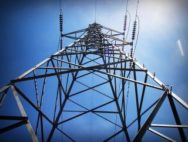
A Microgrid Revolution – Blockchains spreading everywhere
https://www.off-grid
Auto Amazon Links: No products found.

https://www.off-grid
Auto Amazon Links: No products found.

Hot springs offer much-needed peace, quiet and relaxation. The naturally occurring, geothermally heated bliss provided in beautiful surroundings is second to none. Plus, if you don’t want to be in a more developed hot spring spa, there are plenty of options to explore off-the-beaten-track . Here are 6 off-grid hot springs you definitely need to visit!
Located in Lake Mead National Recreation Area, this set of pools is visited by thousands of people per year. A 6 mile round trail takes you up through a dramatic volcanic canyon, south of the Hoover Dam. Volcanic rock and granite boulders litter the landscape and lead you to a spot just downstream of the Ringbolt Rapids. After climbing a 20 foot ladder to access the best springs you can bathe to your heart’s content. Directly at the source of the springs the water is the warmest, reaching up to 110°F. The highly mineralized water spews out of the source at approximately 30 gallons per minute! The strenuous hike takes approximately 5 hours to complete (excluding time spent bathing in those beautiful springs) and is closed during the summer months due to it being hazardous because of high temperatures.
Read this couple’s experience of trekking and camping in the area. Alternatively, watch this father and son duo take the trail up through the canyon and reach their destination:
These hot springs are rather unique, trading mountainous vistas for a beach front! The warm water seeps up through the sand at the Steep Ravine Beach in Marin County. These springs are quite a phenomenon, only being exposed for a couple of hours a day. Therefore, it is important to consult a Californian Tide Chart and opt for a minus tide, to avoid disappointment. However, due to the very slight window in the day in which the springs can be accessed it can get rather busy! It’s worth it though, even just to paddle in these warm waters.
Between the small towns of Salmon and Challis, high up in the desert, lies a chain of six waterfall fed pools. These small but perfectly formed features are accessed by a very up-hill 2 mile hike. The trail offers little shade for respite and the majority of the climb is done in the last quarter of the trek. The pools are a definite reward after that steep incline! Water temperature varies depending on the time of year, so don’t dive in (literally) until you’ve judged the temperature with a hand or foot first! Be warned clothing is optional at the pools, so don’t be surprised if you see some not entirely clothed hikers in the area.
For other hot springs in Idaho, check this out.
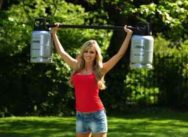
Bottled Gas supplier Calor Gas is offering funding of up to £5,000 for schemes that will improve life in off-grid communities.
Calor Gas spokesman Paul Blacklock said: “We provide energy to homes and businesses and understand the challenges country living can pose, especially when it comes to community facilities. Projects we support could be anything from community centres, village halls and sporting venues to youth clubs and Scout groups, or they could be initiatives to support the elderly.
“Entries open on April 3. We will be encouraging the whole community to get on board by voting for their favourite.”
Calor Gas Limited (Calor), a subsidiary of SHV Holdings N.V. is an energy service company that provides liquefied petroleum gas supply and other energy services. The company offers products and services such as home energy supply, boiler and heating services, gas bottles, Calor liquefied petroleum gas autogas, and renewable energy for residential customers. It offers LPG solutions for FLT, fork lift truck training, heating solutions, radiant heating, warm air heating, wet system heating, water heating, farming wit LPG, and servicing and maintenance, among others to business customers. The company also sells gas cylinders, outdoor living, commercial appliances, in the home, and solid fuel pallets. Calor is headquartered in Warwick, the UK.
Calor Gas Limited Competitors include
Alpha Petroleum Resources Limited
FCL Petroleum Limited
Gasrec Ltd
Linton Fuel Oils
Sonatrach Petroleum Corporation
BOC Group Limited
Auto Amazon Links: No products found.
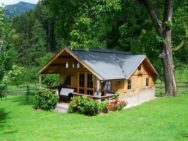
There’s no doubt about it, the tiny house movement has well and truly taken off. Please let us know your favorites (news@off-grid.net). Extreme downsizing has become very popular, with a smaller space offering easier upkeep and lower utility bills. The average tiny house is 186 square feet – truly tiny! With prices of building your own tiny home being around $23,000 on average (remember Joseph’s upcycled shipping container home?) it’s not hard to see why it’s so popular. Even having someone else build you a tiny house, prices start around the $45,000 mark. This is a great deal cheaper than the price of the average American home which runs into the hundreds of thousands of dollars. Therefore, a good many tiny house owners do not have a mortgage, giving financial peace of mind.
A survey conducted in 2015 by TheTinyLife.com found that retirees are becoming a large proportion of tiny house owners. The results showed that 30% of just 2,000 respondents were aged between 51-70 years. Of course this makes sense, as people reach retirement age downsizing is common practice – and you can’t downsize much more than a tiny home! When looking for a tiny house when you’re not as young and nimble as you used to be, it is important to look out for certain features. These include: easy to reach storage to reduce awkward stooping and stretching; a single storey tiny house, or a main floor bedroom – avoid loft sleeping areas with ladders! Accessibility is also important; whether this be wide doorways, walk in showers, ramp access or building low to the ground.
Here are ten tiny house companies, offering retiree appropriate (and non-retiree) products which could very well seal the deal for you!
Based out of the Squirrel Hut mini-office in Olympia, Washington, Zyl Vardos builds unique and customisable small structures. The tiny house products offered vary in price from $45,000 to above $96,000. Currently their website showcases 10 of the tiny houses offered, but if you fancy having one designed to your own specification, that is also possible.
Their “Little Bird” Basic option is one of build options available. Coming in at $68,000, with a 22 ft x 8 ft floor space, this home has a copper roof and cedar exterior. With a single French door, 6 windows and a kitchenette, this tiny house has everything you would need. The bed nook happily fits a queen mattress, with room to spare, and a flush or compost toilet can be fitted.
If you would like to upgrade to the “Advanced” option of the Little Bird you can – for an extra $10,000. This upgraded model includes a tiled bathroom floor, oak floors, double French doors, expanded kitchen storage amongst other features. Custom options for a retiree such as wider doorways and a raised toilet can be …
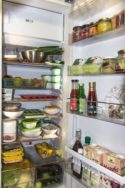
EcoSolarCool have kick-started 2017 with the release of two new Solar Refrigeration models. The new additions to the upright product line aim to minimise the daily power consumption of cooling appliances. Refrigerators are one of the most energy consuming appliances in the home, accounting for up to 25% of household energy cost. EcoSolarCool want to change this, “providing constant, reliable and energy efficient cooling at great value.”
Both of EcoSolarCool’s new models are approved by UL250 and CSA to US and Canadian standards. These are the only solar refrigerators in the world to hold this approval. Plus this is for the whole unit and not just the compressor. Both models have the most up to date and advanced Danfoss DC compressor and are manufactured in Europe. The power consumption for the models is also at a record low for the solar/DC appliances industry at 201 kWh per annum! This is also amongst the lowest in the AC refrigeration appliances market.
The ESCR260GE Metallic Grey model has a total capacity of 260 litres (9.2 cubic feet). The refrigeration compartment is larger in comparison to the freezer compartment at 235 litres (8.3 cubic feet) to 25 litres (0.9 cubic feet). The freezer is located at the top of the unit and the refrigeration compartment at the bottom. This model weighs in at 121.3 lb (55kg) and is 23.7 x 25.2 x 57.1 inches.
The ESCR355GE Stainless Steel model has a total capacity of 354 litres (12.5 cubic feet). The larger refrigeration compartment (258 litres/9.1 cubic feet) is located at the top of the unit, and the freezer compartment (96 litres/3.4 cubic feet) at the bottom. This model weighs in at 163.2 lb (74kg) and is 23.7 x 25.2 x 78.8 inches in size.
Both models have adjustable internal temperatures and reversible doors. The temperature range for the cooling compartment is between 0°C/32°F to 10°C/50°F. Whereas, the freezing compartment temperature can reach as low as -18°C/-0.4°F. For operation, both models need a solar panel, a 12 volt AGM, lithium or deep cycle battery and a 15 amp 12/24 volt solar charge controller. The battery ensures the refrigerator will continue running through the night and on not so sunny days. Whereas, the solar charge controller regulates the electric charge from the batteries and the solar panel(s). To find out how many solar panels/batteries needed to run your solar refrigeration appliance, check out EcoSolarCool’s blog post.
The refrigerators are perfect for a wide variety of situations from RVs, to cabins to on and off-grid homes.
Both refrigerator models can be bought from a local dealer or the Solar Power estore. Prices advertised on the EcoSolarCool website are $1,299.00 for the smaller Metallic Grey model and $1,650.00 for the larger Stainless Steel model.
All the solar powered refrigeration and freezer appliances sold …
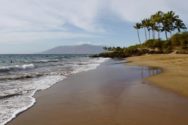
https://www.off-grid
Auto Amazon Links: No products found.
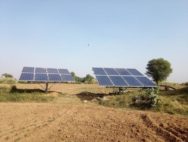
https://www.off-grid
Auto Amazon Links: No products found.
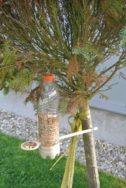
https://www.off-grid
Auto Amazon Links: No products found.
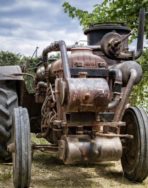
https://www.off-grid
Auto Amazon Links: No products found.
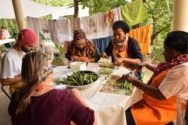
Last month I outlined the Permaculture course available at the School of Integrated Living (SOIL) in the ecovillage Earthaven (see here).
Recently, this program has been certified by Gaia Education, a provider of sustainability education across the world. The Ecovillage Design Education (EDE) credential will be provided through the Permaculture Immersion program running between Jun 10 and August 11 2017 at Earthaven ecovillage in North Carolina. The program provides students with both the knowledge and practical skills needed to design a society which reaches sustainable development principles supported by the UNESCO Global Action Programme on Education for Sustainable Development.
The program has four main dimensions which are covered. The social element involves working towards a common vision, improving communication skills and the ability to deal with conflict and diversity within a society. The economic element includes assessing the impact of the global economy on local projects and coming up with ethical economic opportunities within projects. The ecological aspect is learning about permaculture principles, as well as designing water systems for projects and learning how to apply green building principles. Finally, the worldview aspect is about maintaining a healthy lifestyle whilst incorporating regular spiritual practice.
SOIL co-founder, Lee Walker Warren, said, “The program helps passionate people understand their impact on society and forge real connections with themselves and others. People who are deeply engaged in their local and global communities make the biggest impact, both on other individuals and the planet.”
Over 4,900 students have taken part in the Ecovillage Design Education program across the world, supported by Gaia. There are various locations where these programs take place including Estonia, Italy, Canada, Chile, South Korea, Thailand, India, Scotland, Switzerland, Japan and the Netherlands. However, SOIL is only one of two organisations in the US which offer the UNESCO recognised EDE course.
On completion of the course at Earthaven, both an EDE certificate and a Permaculture Design certificate will be awarded.
There is currently a $100 discount when booking through the SOIL website for the Permaculture Immersion program by using the promotional code: SOILPEI100.
Auto Amazon Links: No products found.
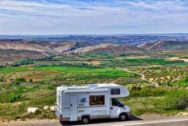
Cooking can be challenging in itself. Following recipes, getting the right ingredients and hoping it comes out tasting delicious – unless you’re a top class chef, everyone has had a fair few burnt dinners in their time. When you’re off-grid however it’s not just worrying about what it tastes like, but how to cook the food in the first place!
Solar cookers have been on the market since the mid-80s and have become a popular option for safe and easy cooking with no fires or fuel involved. There are obvious benefits to solar cooking, after the initial investment it is a free renewable source of energy. Not only this, but it is seen as a healthier way of cooking without smoke from fires etc.
Solar cookers convert the sun’s rays to infra-red radiation producing heat. Therefore, it is not the sun’s heat itself or the ambient air temperature outside the cooker that causes the food to cook.
The solar box cooker is derived from a box with reflectors that funnel the sun’s rays into the chamber which contains the food to be cooked. These models can reach very high temperatures, on average between 200-350°F, which is ideal for most baking needs. With a good heat retention and little need for supervision it is perfectly safe to leave food for long periods without fear of burning. Being a box shape these cookers are less likely to tip over and when constructed will have high levels of insulation.
The solar panel cooker on the other hand doesn’t reach temperatures quite as high; between 200-250°F. Essentially the design is a pot or pan within a plastic enclosure, with a 3-5 side reflective panel surrounding it to channel the sun’s rays. This type of design is best for slower longer cooking periods, leaving food very succulent. With no adjustments needed to track the sun, little supervision is needed.
Finally, the solar parabolic cooker can maintain the highest temperatures of the three main types and so can be used for grilling or even frying food. It can cook food much quicker, however usually smaller amounts than what can be held in the box or panel solar cookers. Also more attention is needed when cooking using this model, as the angle and direction of the cooker will need to be changed more frequently to track the sun.
There are many plans and designs for you to try if you want to have a go at a DIY solar cooker. Many designs include using materials commonly found around the home or are easily obtainable. For example, cardboard boxes, aluminium foil, black paint, some form of adhesive and even umbrellas!
2023 © Off-Grid.net
9b Audrey St. London E2 8QH
email news@off-grid.net
call US office: toll-free 1-877-706-7423
OR
UK: +44 207 729 2749
How to register – Coming Soon
How to Manage your off-grid account
How to use the off-grid map – Coming Soon
Coming Soon
